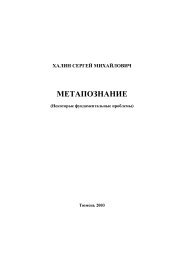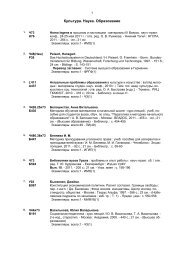The Economic History of Byzantium - Dumbarton Oaks
The Economic History of Byzantium - Dumbarton Oaks
The Economic History of Byzantium - Dumbarton Oaks
Create successful ePaper yourself
Turn your PDF publications into a flip-book with our unique Google optimized e-Paper software.
998 NICOLAS OIKONOMIDES<br />
and one-half in synone for the zeugaratos, 1 ⁄2 <strong>of</strong> a nomisma in kapnikon for the boidatos,<br />
and 1 ⁄4 <strong>of</strong> a nomisma in kapnikon for the aktemon. This personal tax tended to vary from<br />
place to place. 61<br />
Finally, mention must be made <strong>of</strong> the kaniskion, a contribution in kind whose purpose<br />
was to provide foodstuffs for the tax collector (dioiketes) and his entourage and fodder<br />
for their animals. We have information about this for the eleventh century: for each<br />
small landowner (whose basic tax might be, say, between 1 ⁄2 and 3 nomismata), the<br />
kaniskion amounted to one loaf <strong>of</strong> bread, one chicken, half a metron <strong>of</strong> wine (approximately<br />
4 liters), and one modios <strong>of</strong> barley (about 12 kg). For a large landowner (paying,<br />
for instance, 43 nomismata), this contribution would be tripled.<br />
<strong>The</strong>re were also regular taxes on domestic animals that produced income. <strong>The</strong> ennomion<br />
62 was a regular charge on such animals and took the form <strong>of</strong> the payment <strong>of</strong><br />
money in return for grazing rights on land belonging to the state or the community.<br />
For sheep (and, I assume, for goats) the ennomion amounted to one nomisma per 100<br />
head <strong>of</strong> animals in the tenth and eleventh centuries, and to 1 ⁄3 (or 1 ⁄12) <strong>of</strong>anomisma<br />
per head for oxen and buffaloes. In some texts, the ennomion is called a dekateia (meaning<br />
“rent for the use <strong>of</strong> grazing land”), and sometimes a distinction was made between<br />
the summer and winter dekateia, which were charged on all domestic animals apart<br />
from plowing oxen and were collected by the state representatives or by the owner <strong>of</strong> the<br />
grazing land. Over time, however, the ennomion became more and more a tax on domestic<br />
animals, being charged even on bees (the melissoennomion, first mentioned in 1152).<br />
Anumber <strong>of</strong> supplementary taxes existed in connection with those described above,<br />
and although they are best known to us after the eleventh century, they seem to have<br />
been introduced somewhat before that time. 63 <strong>The</strong> aerikon originally depended on the<br />
basic land tax, was charged on animals, and was paid either in cash or in kind; 64 later<br />
the term aerikon and, in particular, aer, took on quite a different significance and came<br />
to mean a type <strong>of</strong> fine. 65 <strong>The</strong> oikomodion was a tax that seems to have been introduced<br />
from conquered Bulgaria after 1018 and to have consisted <strong>of</strong> a regular payment to the<br />
state <strong>of</strong> a set quantity <strong>of</strong> grain on the part <strong>of</strong> each owner <strong>of</strong> land. Tenant farmers paid,<br />
according to their financial circumstances, the paroikiatikon, the aktemonitikion, or the<br />
zeugaratikion (a tax on paroikoi who were zeugaratoi), or the zeugologion (a tax on the pairs<br />
<strong>of</strong> oxen belonging to paroikoi), both <strong>of</strong> which were regular levies on their working animals.<br />
<strong>The</strong>se new regular taxes, which were accepted without any particular protest, and<br />
61 Documents from the monastery <strong>of</strong> Iveron (Actes d’Iviron, ed. J. Lefort, N. Oikonomides, and D.<br />
Papachryssanthou, Archives de l’Athos, 4 vols. [Paris, 1985–95], 1: no. 30 and 2: no. 48) refer to<br />
zeugaratoi who paid 43 ⁄48 <strong>of</strong> a nomisma, to voidatoi who paid between 22 ⁄48 and 26 ⁄48, and to aktemones<br />
who paid between 4 ⁄48 and 7 ⁄48.<br />
62 Oikonomides, Fiscalité, 72ff.<br />
63 Ibid., 80ff.<br />
64 For adifferent etymology and interpretation, see J. Haldon, “Aerikon/aerika: A Reinterpretation,”<br />
JÖB 44 (1994): 135–42.<br />
65 See below, 1038.








